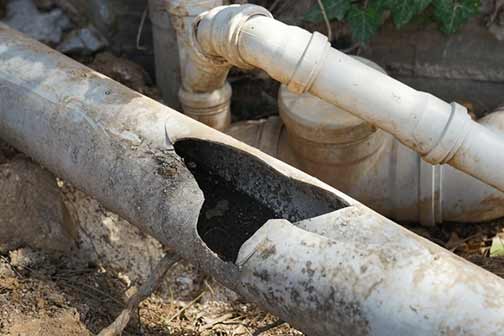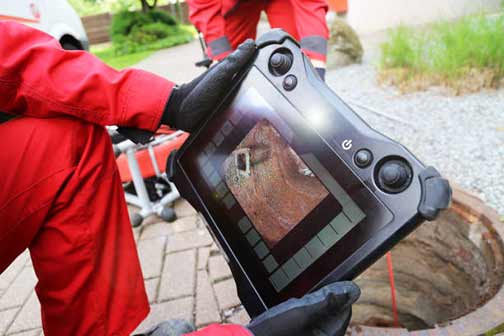
Sewer line problems in your building can cause major lifestyle and business disruptions. Issues like slow-running drains and sewage odors in the building are just the beginning, warns Keyrenter Property Management Boise. If not addressed, a broken sewer line can eventually damage your building.
To fix suspected or confirmed sewer line problems in your home or commercial building, you need effective methods for diagnosing and fixing those problems. This post will explain the common risk factors and causes of sewer line breaks, as well as what to do about them.
Risks, causes, and signs of sewer line breaks
Common issues that increase the risk of sewer line breaks or directly cause those breaks include:
- Tree roots: Tree roots searching for nourishment can break through the walls and joints in a sewer line or exploit existing leaks. Once inside the pipe, the roots will grow until they block it and eventually push the pipe apart.
- Aging pipes: Due to general wear and tear, rust, and corrosion, sewer lines become more problematic as they age. These issues are more common in clay, cast iron, and galvanized steel pipes, but they can happen in sewer pipes of all materials.
- Pipe settlement: Pipe settlement occurs when heavy rains, earthquakes, erosion, and construction activities cause movements in the soil surrounding a sewer line, leading the pipe to lose its support and consequently bend, sag, or buckle.
- The buildup of debris: If hot grease is frequently poured into the line, it will congeal, stick to the pipe walls, trap debris, and restrict water flow. Other debris, like hair, rags, and food scraps, can also block a sewer line and cause cracks in the pipes.
- Improper installation: Inadequate pipe bedding, incorrect slope, pipe misalignment, and substandard materials are installation errors that predispose a sewer line to problems from its inception.
- Other causes: Sewer pipes will corrode, lead, and crack if exposed to corrosive elements in the soil or acidic water. Wastewater stuck inside the line can also decompose the pipes or lead to conditions that create corrosive gases.
Warning signs of a broken sewer pipe
These include:
- Slow drains: Multiple slow drains in a home or commercial building may indicate the presence of major clogs and blockages within the sewer line.
- Bad odors: Sewer gas odors mean trapped gases inside the sewer line (due to clogs and blockages) are escaping through various drain openings.
- Gurgling sounds in the toilets: This is also caused by trapped gases inside the sewer line escaping via the toilet drain each time the toilet is flushed.
- Frequent drain clogs: If clogs become a chronic problem in the system, it is likely that the cause of the problem can be found inside the sewer line.
- Lush areas in the lawn: Patches of unusually green grass in a lawn mean that a sewer line leak is feeding water and nutrients to the plants.
- Wet or indented lawn surface: A soggy lawn or depressions on the lawn surface show that a broken sewer line is discharging water into the surrounding areas.

Diagnosing and repairing a broken sewer pipe
Fixing a broken pipe begins with an accurate diagnosis of the problem. Previously, this could only be done by digging up the sewer line to examine it physically. New methods of sewer line problem diagnosis and repair let you avoid this difficult process.
Sewer camera inspection
This is the best method to detect and evaluate sewer line problems. It uses a waterproof camera mounted on a cable inserted into the sewer line to capture a real-time video feed of the true physical condition of the pipe.
To repair the sewer line after it has been evaluated, you have two options: traditional repair (which involves excavating the line) and trenchless repair (which does not include excavation). Each repair method has applications for which they are best suited.
- Traditional sewer repair: This method involves trenching and is best for replacing large sections of a sewer line or the entire line. Traditional methods allow for more accurate placement of a sewer line. This method, though costly, minimizes the risk of future sewer line problems.
- Trenchless sewer line repair: can be done via pipe lining or pipe bursting.
- Pipelining: A resin-coated liner is inserted into the sewer line along with an inflatable sleeve. The sleeve is inflated to press the resin into the pipe walls. After the resin hardens, the sleeve is deflated and withdrawn, leaving a new pipe in place.
- Pipe bursting: A cone-shaped steel head is pulled through the old pipe to break it apart. At the same time, a new pipe is pulled into place to replace the old pipe. Debris from the old pipe remains in the soil.
Conclusion
Most sewer line problems can be avoided if you hire only licensed experts with a proven track record to handle the sewer issues in your home or commercial building. This helps you avoid problems arising from poor installation and substandard materials. Regular inspections by a professional can also help to prevent other sewer line problems.

